#hivelands
Text
10.02 Y
The closer you got to the New Lands of Izril, the more you realized that the changes to the continent weren’t just in the nations arriving, the political turmoil, or even the land itself.
It was affecting all of Izril. The raising of so much landmass, nearly a fifth the size of the original continent, hadn’t just made a new zone to explore. The added geography was influencing everything from sea currents to plant life, and even the weather.
It had also ruined lives, or at least, sent entire cities into spirals of uncertainty. How, you may ask? Well, consider this: you were a happy, coastal city far south from the Hivelands minding your own business when, one day, the earth rumbles. The sea you’ve used for transport and food and your people’s income vanishes.
How…what were you supposed to do? If the one thing your home was known for vanished, how did you survive?
Read More...
16 notes
·
View notes
Photo
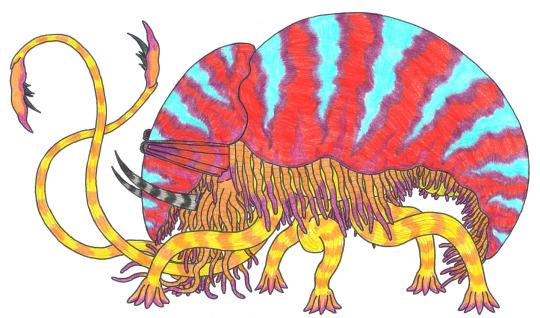
One look at a specimen gives you a pretty good idea where this species of naotul resides. Some may guess in tropical rainforests (which is a good guess), but it is actually in the other super colorful ecosystem: the rainbow mountains. To those that are not familiar with these areas, rainbow mountains are alpine ecosystems that happen to have a very curious mineral composition. We aren't fully sure how they are formed, but it seems that the huge variety of minerals, rocks and clay that make up these mountains give them quite the palette of colors. As the name suggests, they have the hues of the rainbow splattered all across the landscape. It isn't just the mountains that have this color, though, as the flora and fauna boast this color scheme as well! The composition of the soil is excellent breeding grounds for certain fungi and lichens, who share these brilliant hues. The plants that absorb nutrients from the soil also seem to suck up some of the bright coloration, staining their own leaves with it. Then comes the herbivores and other creatures that feed on these plants and fungi, which winds up showing in their coats too! It runs through the entire food chain, from bottom to top! While it should be pointed out that not all species can get color from their diet, that doesn't mean they are any less flamboyant! In this artful landscape, plain colors and single hues will make one stand out quite obviously, so they too get flashy coats to better blend into the environment. This leads to a biome that has some of the most fabulous and colorful creatures you have ever seen! The Rainbow Naotul is one of the many creatures that exist on this living canvas.
Unlike their Hiveland brethren, Rainbow Naotuls have switched from an insectivore diet to more of a fungivore one. The various fungi and molds that grow upon the rocks and soil are scraped off by their pair of sharp tentacles, then picked up by the mass of sticky tendrils that hang around their beaks. Lichens are on the menu too, as they pretty much clean every rock and surface they come upon, picking off every bit of nutrition they can. If some bug or critter gets caught in the grazing process, the Naotul will dine on them as well. No point passing up on extra food! As they feed, Rainbow Naotuls keep a close eye on their surroundings. With their eyes able to move independently from each other, they are constantly swiveling around to check every angle. One reason is to keep track of their fellow herd members, to see if they are on the move or if they are getting too far away. The other obvious reason is to watch out for predators, as this beautiful biome still has meat eaters! The last thing a Rainbow Naotul wants to encounter alone is a predator like a Fabulous Lancejaw, so they keep watch so that they have time to react before they strike. When danger is spotted, the Rainbow Naotuls band together and condense their herd into a tight circle of shell. The largest ring the outside of the mass, while the young, old and weak remain in the middle. Tusks and tendrils point outward, presenting the herd as a meal that isn't worth the risk. While Naotuls may not pack the most powerful weaponry, those clawed tentacles can do some real damage if they whip you with it. A predator can easily lose an eye if they tangle with a group of these agitated beasts, so it is best to attack when they are singled out and unaware.
As a resident of the rainbow mountains, most people know of this species by their brilliant shells that often get sold as trinkets and souvenirs. With a biome full of colorful critters, it should be no surprise that a lot get hunted and traded for their brilliant hues. Rainbow Naotul shells are often carved into different shapes and patterns, usually adorning necklaces and other jewelry. The market for such fancy baubles definitely puts pressure on a lot of species within this land, as they are hunted more for decoration than meat. Locals put in a lot of effort to keep hunting sustainable and to stop poaching, but as long as these trinkets sell, the threats will be constant.
Chlora Myron
Dryad Natural Historian
--------------------------------------------------------
“Rainbow Naotul”
Some more beasties and of course another biome! Not a lot of info here, since it is very much one of my previous species with a different paint job.
17 notes
·
View notes
Text
Arboreals and Coastals are probably both accused of ‘being above it all’ in both a metaphorical and literal sense. They live in trees and mountains, in complex cities, looking down on everything else which constantly floods and changes shape. Meanwhile the plainsfolk, hivelanders and distantlanders have more experience on the ground (and have less structure away from disasters). Though Coastals (though more usually Hivefolk) can also be called ‘below it all’ because they Swim (or Tunnel), and have a very different cultural priorities because of it.
1 note
·
View note
Photo

Innit he cute? Give him a smooch
15 notes
·
View notes
Text
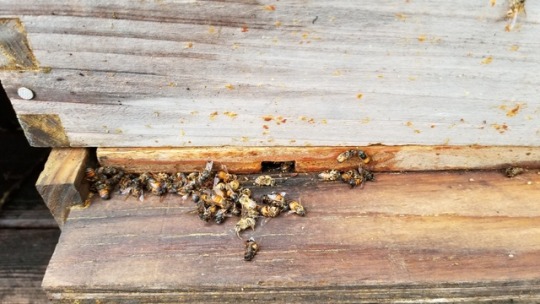
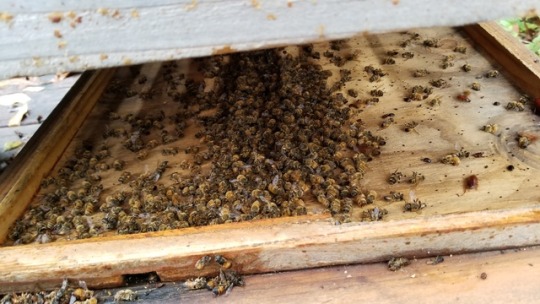
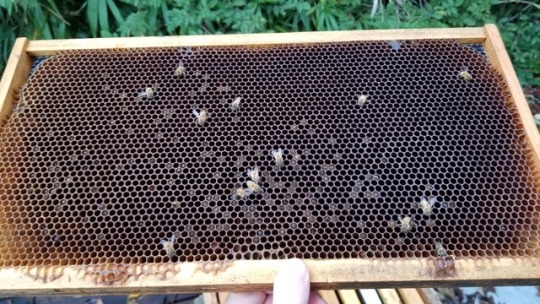
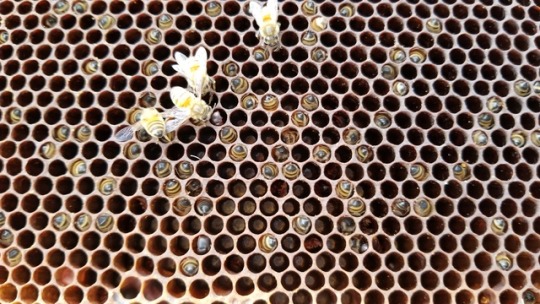
Looked at Easter Hiveland real quick and found it completely frozen. Even the hive beetles are dead.
I'm guessing it was the combination of low temperatures and constant rain that just made it impossible for them to keep the hive warm. It's sad, really; but what can you do but move on? Natural hive and the unnamed extraction hive are still alive and well. I just hope they have enough stores to last the winter.
#Bees#Beekeeper#Beekeeping#Fox#Talks#Honeybee#Honeybees#Honeycomb#Honey#Bee#Freeze#Dead#Easter#Easter Hiveland#Sad
131 notes
·
View notes
Text
I want to go to my hiveland and braid a horse's main. Is that too much to ask?
5 notes
·
View notes
Photo

Hive Pic of the Day!! Sayuka Bloodstone "The Magician" 11x14 $400 #hiveland #hivegallery #dtla #galleryrow #picoftheday #painting #art #original #tarot #tarotcards #deck #amazing #fantasy #mystic #wizard #magicians #magic (at The Hive Gallery and Studios)
#wizard#art#fantasy#deck#dtla#hivegallery#galleryrow#hiveland#original#tarot#amazing#magicians#mystic#magic#tarotcards#painting#picoftheday
1 note
·
View note
Photo
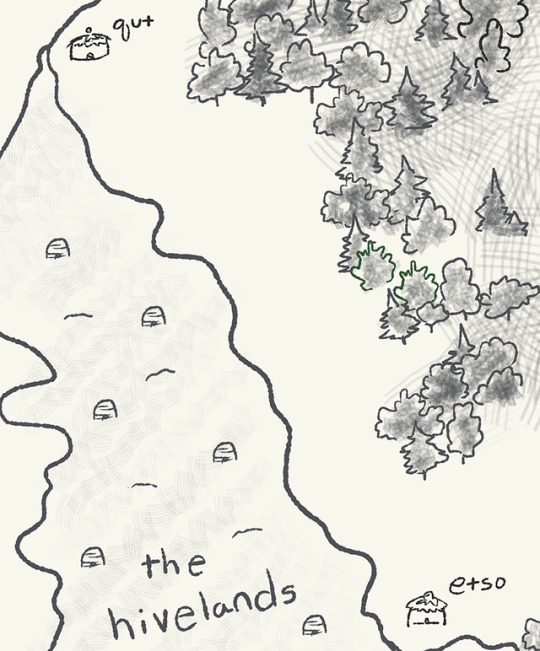
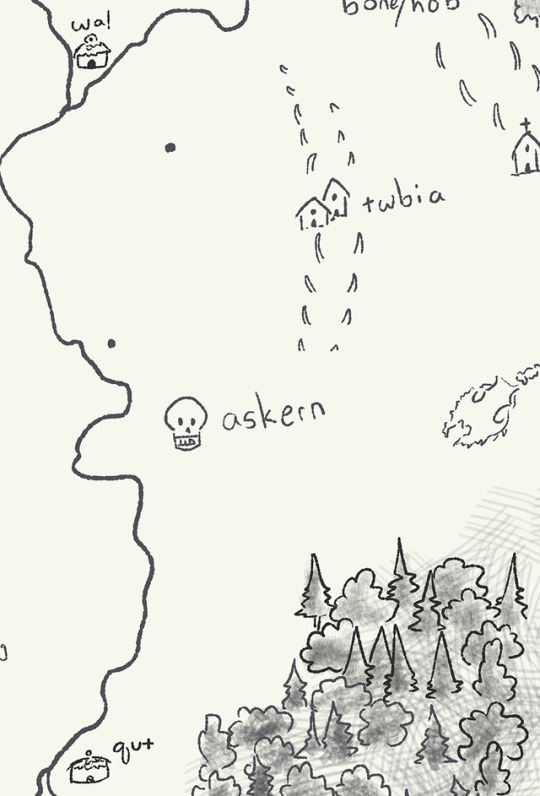
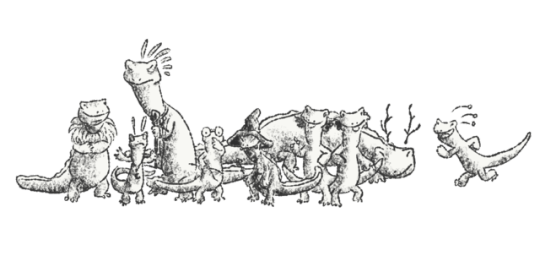
Where do efts live?
The nomadic efts live, of course, in boats that travel the river, so their homes could be said to be all along the length of the county. They also winter on land--but each family’s berth is a well-kept secret.
The settled efts live in three villages on the banks of the river. The southernmost, Etso, sits on the shores of the lake. The second, Qut, sits at the fork in the river that marks the northernmost tip of the Hivelands. The third village, Wal, sits at another fork in the river to the north. There are a few eft homesteads along the banks of the river outside the villages, but most settled efts stick close to their hometowns.
The swamp efts live in settlements throughout the wetlands south of the lake. They don’t have highly organized villages, but a loose network of homesteads.
There’s also a cult of moon-worshiping efts living somewhere in the woods to the north, but nobody knows much about that.
1 note
·
View note
Photo
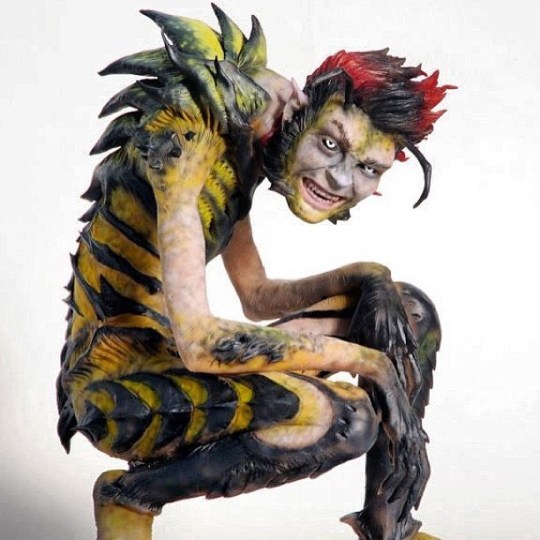
Soooo long ago I sculpted my Hiveland Avatar for @hivegallery I called him the Bee Wolf. Photography by @rannieaugogo #CigNeutron #faceoff #hivegallery
6 notes
·
View notes
Text
The city of your Carnival wasn’t so far away from the old hive’s shore that you couldn’t still hear the soft murmur of waves in the labyrinthine corridors, like that tale of putting your aural caverns up to an empty shell to hear the sea (yeah, you heard it, but mostly because that was all you ever heard around you and putting a shell to your ear didn’t quite sound so different). Sometimes, on particularly clear nights while scaling the taller towers to pass on orders or messages or packages or who knows what between signalers or saints or superiors or who knows who, you could still catch a sight of the moons gleaming upon the horizon’s surface (Like. If you were at any distance tall enough, would you still be able to see that shine? Motherfucking wonders of the world). The inland-rushing breeze would carry that familiar scent of salt, unless a coming storm or whim of the wind shifted the air to come from some other direction.
Typically then, among the smells of fresh rain and lightning in the heavy, thick humidity, it smelled of smoke those nights.
Not the nice sort, like the incense clouding up the holy halls deep in the confines of the citadel real ethereal looking, trailing off artful lines that go twisting through the air and up into the arched ceilings. Less sweet on the sniff node, and though faint, the scent was rich and deep, and a touch artificial, like throwing plastic on the flame. Common was the word rebellion, spit out like a curse and unfunny to the whisperers like some malicious prank. Gossip was nearly just as common as worship here, but those nights, the balance tended to get almost sinful until High Brother called to Court the matter. You didn’t witness much of those affairs. Those were for the most crackerjack of carnies. The best of sharp eyed laughsassins, the staunch subjugs, the voracious fortune killers, and the foxy fucking funambushlists.
The rumors--rumors? Maybe to the likes of you, sure--
The news of all discord struck deep into the pushers of trolls for some fuckin’ reason was straight from the source legit. Woe had inflicted the land. Poor motherfuckers. And all your siblings wore all these twisted faces at the fact (contemptuous looks, but to you, sneers looked so similar to sadness). Fellow congregations in cities beyond yours couldn’t be fixing up those places back to its miraculous self. Couldn’t all get showing those down and out sorts the magic of the world. Faithful seeking sanctuary from such uproar came crawling up to your Carnival, pleaded cases with High Brother, and understood their failure. They gained place in the citadel, which was all merry to you. Injured, in all cases, unable to continue the holy crusade of maintaining the peace and prosperity. They carried messages of their own, informing the church of the state of affairs where they come. Most always the tales were victorious.
“The unsightly scum are few and far between. The littlest factions that are easy to put down, the merest tantrums. But they have ideas in their nugs that aren’t so easily dispelled by persuasion alone. Ideas that persist past the due decision their thinkers be done with thinking them.”
In the full pews, a sight you think would appear similar to the old days when numbers of all ages would stay here to protect the city, you all murmured prayers of strength and solidarity to your siblings still guiding the woebegone to salvation, and you’d give a few thoughts of your own to the wretched who lost their ways.You couldn’t understand such upset out there, beyond the sparkling colors of stain glass and comfort of solid stone painted up fine with the numinous colors. Life was a gift, all experiences treasured and for a grand purpose yet to be revealed. Life surprised you in that righteous way, and you couldn’t get greedy after those miracles lest your want give you the unexpected results in punishment.
Clowns come spreading other stories, too. Some nasty cobalt no one’s stars have so alligned to challenge yet, but cobalts are the the chaotic romping kind of trolls, if you had any thought to voice on the matter. The one sort of sympathy you can give is condolences for a lost mate, and you were surprised with bringing those looks to the faces of your siblings when telling that history (you didn’t realize crippled trolls were dead trolls walking--er, rolling--and none of your siblings helped you know, so you stayed so blissfully ignorant). It isn’t often to get a mood out of a clown, you’ve seen. Seadweller all salty at the shores, too, but you didn’t really know how a seadweller could be anything but salty.
You sure try to lift your siblings’ spirits, though. Like, as though you could be getting them up as high as to pass a prayer right into the ears of the messiahs themselves. Yeah.
So you take what burdens off them you can (since you’ve already learned not to be offfering your pie without a real misunderstanding ringing their souls wickedly choked with offense), for the familiar faces common in the crowd you know from your sweep already living here, to the new designs of sisters and brothers just coming onto this grand stage. Tires a brother doing the good work, but it makes them all chill and it makes them all smiles for the most part.
Not right now, though.
You got stuck staring out the window at this little wisp of a tree trying to grow in a crag on the sill. It’s one of those clear nights, where you were catching a glimpse of that multicolored shine on the horizon before this wee critter swayed into your vision and, huh. You know. You’ve never actually witnessed a full grown tree, or those forests you once read Tavros saying Terezi lived in. Just the sprawling space of sand and sea, and beyond the dunes, marshes, and beyond those, some grassy plains, and beyond those, the start of hiveland being built up around the Carnival. And you never traveled to see beyond the tops of those dunes; you weren’t supposed to venture far from your lusus. You knew how it was with family. Maybe you could ask at High Brother whether you could venture back for a visit to the old goat, but he was an intimidating one.
You hear your name sharply break the quiet up here, but your reaction must not be quick enough because you get a few shakes to your nug from a hand high up on your horn. Sponge sufficiently rattled, and now a few pages of the packet you were bringing up to the signalers loose from your hands, skittering down the stairs, you spy upon the preying eyes of the sister of planetary coms.
“Hebetude.” Your other name, whatever that is, is full of annoyance. You’re quick to present what papers are still in hand so as to appease her. “These were asked for a quarter clock ago.”
You don’t have much to answer for that besides, “Time’s just a funny fickle thing.” Some nights you had too much of it, minutes ticking by between seconds, and some nights it seemed to float off out of sight like a balloon lost to a windstorm. Hand on the stairs railing, because funny shit happened while you were on stairs with some funky humors pushing at your balance, you go retrieving the lost articles. You’re not really supposed to look at them, but Conscription and Ascension are noticeable words to your eyes.
“Ships be coming?” And when you look up to hand off the last, you know your words were not welcome and you wouldn’t be getting any gift of tasteful sopor for your efforts. That was, as far as you knew, a grand happening, and an occasion open to some celebrations with reunited friends and friends that would be departing to wherever the fates may choose.
She seems to consider you deeply, in a way that makes you feel like the target of a sea bird aiming a real good spear. “Not here,” she finally voices (conceding to herself, if that’s all he knows, he’d stir unnecessary hype with a mouth that runs like water), “Not quiet yet. But I can’t wait for when they do to see what they’ll do with you.”
Its a spare sheet you find fluttered way down at the foot of the stairs once you make a quiet retreat from that keenly disapproving stare that describes a shipment of captured psions from a hivestem compound north of the bay, and a yet uncovered dual-eyed yellow individual with a group who managed to slip away. Describes, too, an early draft plan forming to nip away at the rebelling numbers on planet and divert their “excessive energy” to more disciplined purposes. Too free an environment, it says, where childish insolence can ingrain in an individual despite their sweeps.
You’re quick to deliver the paper back up the plentiful stairs, and while you try and say you already promised a favor for another brother, she hands off some new task for you to do first. “Punctually, for messiahs’ good graces.”
#plot#ic drabble#((nitpicking at this point and sometimes its just gotta be#wow i havent para'd in a while
6 notes
·
View notes
Photo

Thank you @thezoekim ! These 12x18's are going to a good home! #personalmonsters #monsters #artistsoninstagram #illustration #illustrator #artist #hiveland #artlife (at The Hive Gallery and Studios)
0 notes
Photo

Hivelands are bizarre and incredible ecosystems, there really is no compare to them. It is no secret that habitats are built and maintained by a variety of life, but to see such a massive impact on the landscape and by a single species! The massive colonies of Mountain Makers that live below the brittle surface are forever carving and building, chewing deep chasms and erecting gorgeous spires. While it may take decades or even centuries for a landscape to change in such a way you can see it, here in the Hivelands, it can happen within weeks. Mountains and spires seemingly grow from the very earth, while the ground ebbs and flows as if made of sluggish water. The Mountain Makers move and build as they please, and the earth itself shows these changes. While it is an amazing experience, camping out for weeks and watching the land move and change, it is not the friendliest of places. Though the Mountain Makers can rebuild the ground and slopes, the materials they work with are brittle. Multiple layers of the stuff can make it sturdy enough to walk on, but this is not guaranteed here. Due to the massive colonies and other burrowing creatures, the world beneath the Hiveland surface is filled with holes, gaps and chasms. What may look like solid ground could easily be a thin layer of porous stone, breaking away to reveal a yawning pit. You always have to watch your step and mind your weight. One wrong move can either trip you up or send you tumbling down a crumbling sinkhole. It is hard enough to travel through the Hivelands, just imagine living there! A land filled with hidden pitfalls and a world that never sits still. It may not be so bad for animals that can always move with the changing earth, but what of the plants? Surely those who have to root themselves to a single spot would suffer, but life does not give up easily! Hard to believe, but there are a variety of plants and fungi that live in the Hivelands, and have adapted to its strange nature! Some may look like things you seen before, while others take on truly unique shapes! Absolutely incredible to see and study!
Here are a few that can be found within:
1. Walking Tree - While the name helps explain a lot, it is sadly not a tree. It is instead some kind of mobile, bulbous vine that has developed this recognizable shape. The bloated mass above has gas pockets to relieve some of its weight and is filled with photosynthetic bits to help it feed off the sun. The many moving tendrils below help this "tree" walk across the landscape, making sure it doesn't get buried and it doesn't lose its sunlight. These mobile roots also help it get water, as they slither downward to find hidden pools. While it is said that they "walk," it is more like a lazy crawl. Their tendrils move like lethargic snakes, seeking out weaknesses in the ground or possible resources for it to suck up. At times though, they can get a burst of speed, as other creatures like feeding on their juicy bulbs. However, this flash of movement doesn't last long, just enough to throw eaters off and startle onlookers. It comes and goes quite abruptly, giving them a rather unsettling gait. It is no wonder people have haunted tales of this place, as you see these "trees" suddenly stop and go in lurching awkward bursts. One would think they have gone mad!
2. Majestic Auger - With the ground changing in shape, height and composition quite frequently, it can be hard to set down roots. Some plants have turned to a mobile nature, as simple roots will soon find their soil gone. Others have seemingly doubled down on the root concept. The Majestic Auger has decided that it will set down roots and it will stay rooted until the end of time! Its main body is quite small, sharing space with its fancy bulb. The rest of its body, though, is pure powerful ROOT. It has formed into a thick stalk that forces itself downward, releasing rings of anchors along the way. The whole plant pretty much grows downward instead of up! This root just burrows down and latches onto everything it can, making sure it never gets displaced or dislodged. Deep below is also where water and nutrients can be found, so that is good too! This setup makes this plant an anchor in this ever-changing land, and locals use it is a signal for sturdy land. If you ever see the bulb of a Majestic Auger, then you know there is good footing where it has rooted. We pretty much used them as markers for where we could rest or set up camp. My tired roots sure loved the sight of those wonderful plants!
3. Rolling Rose - Another plant that decided it was better to move than be buried, the Rolling Rose prefers to let gravity do all the work. This flower grows thick sturdy limbs that slowly form a spherical cage around its bloom. When dislodged, the flower will simply roll away, tumbling across the land until it finds a calmer spot. When it is time to spread its seeds, it will intentionally uproot itself and go on a trip. Seeds are sprayed across the land as it rolls and bounces, ensuring that at least a few will grow into full bloomed adults. While this design uses much less energy, it is also much riskier. The Rolling Rose only moves downhill, and holes can be considered "downhill" with a maximum slope. Plenty of plants fall into pits and are trapped, left to be food for the underground dwellers. Their large population means that these fatal errors are acceptable, and it does help move more nutrients to back down below. Maybe it is the price they pay for being called a "rose" when they are not one, but then again they didn't pick their own name.
4. Serpentbloom - Hefty roots don't always mean a motionless lifestyle, as the Serpentbloom has morphed these growths into a thick slithering stalk. This is a plant that can slowly move across the ground like a snake, hence the fitting name. It uses the delicate filaments in its flower to observe the environment around it, so that it may move accordingly. These have been likened to that of a serpent's tongue, which only adds to the comparison. When threatened, the plant whips itself up into a standing position and it flares its bright petals. This is a warning to herbivores that it is poisonous, and eating it would be a big mistake. Their deadly flesh has once again drawn comparison to the serpent, whose flesh is not actually poisonous so I don't really know what they are getting at. I have heard them argue that a poisonous nature fits well with that of a viper, who's own poison kills men. I counter that it is the viper's venom that causes death, not its own flesh, and Serpentblooms don't bite. Yes, both have the potential to kill people, but one side of that requires the victim to take a big ol' chomp out of the deadly bloom. Honestly, you kind of get what is coming to you if you pull a stunt like that. Pack your own food, don't go biting nature when you don't know what you are doing!
5. Hiveland Boil - Some of the flora of the Hivelands don't get the benefit of looking pretty, and it doesn't help when you get called a "boil." The Hiveland Boil is a slimy bulbous mold that grows in festering piles across the land. Its sticky coating not only dissuades herbivores (what did I say about random biting!), but it also aids in gathering nutrients. The air is frequently filled with spores and dust, and all of that can get stuck on its gooey hide. These tiny morsels are absorbed and used to feed the Hiveland Boil, giving rise to more swelling bulbs. The Hiveland Boil also possesses dripping "roots" that slowly slide through the porous earth. These also trap and absorb nutrients, as well as water, giving it a wide range of feeding options. The slimy nature of the Boil allows it to survive the shifting earth by simply sliding and sticking to everything around it. Its gelatinous tendrils are not thrown off by the moving ground, they just simply flow to where they need to be. If the cluster is greatly disturbed, the largest boils will pop and splatter the smaller pods across the land. When they come to rest, they will drip down new tendrils and begin to grow anew. Highly recommend not setting up camp near these things, as they can pop and spray themselves on your tent, and also they smell pretty bad. It is kind of like sickly sweet rubber, which becomes even worse when they start baking in the sun.
6. Knobby Kasa-Obake - An obvious relative to the common Kasa-Obake, this mushroom had no trouble adapting to this ever-changing environment. This family of fungi are known for their mobile nature, thanks to a strong hopping stalk and a cap filled with gassy pockets. They are light due to this stored gas, so there is less risk of them punching through thin layers of stone. A moving stalk that acts like a single leg allows them to hop across the landscape, which they often do when spreading their spores. This jumping gait helps them avoid pits and holes, simply going over these nasty traps. It is said that they follow the wind, as it helps push them along so that they use less energy. The hanging tendrils act as sensory organs, keeping them aware of their environment. Changes in the air alert them of danger, and they maneuver accordingly to avoid it. In a pinch, they can expel a portion of their gas to shoot themselves straight up, high and away from danger. Once their fuel is spent, they unfurl their cap and lazily float back down to the earth, the wind depositing them somewhere that is hopefully safer! They are fun to watch but a nightmare to collect when you need samples! Can't exactly chase after these hopping things when every step could mean your doom!
7. Angel's Lace - The Hivelands are already a dangerous place, just think of the hidden chasms, Pitfall Moles and Leg-Eaters! Just walking across the land can be a dire task, but there are some flora that can make it perilous even when you are standing completely still! The Angel's Lace is certainly one of them! It is a round hard-shelled fungus that starts its life upon the surface, but eventually is drawn into the underground. They feed upon the surrounding detritus and waste left over by the Mountain Makers, slowly swelling in size. Since they are rounded and have no adaptations to help them move with the changing land, most of them tend to tumble down into holes or are slowly built over as the Mountain Makers do their work. This lands them in the right place to get more nutritious waste, but it poses a problem for reproduction. How can they spread their young if they are buried down below? The Angel's Lace has an answer to that question, a very violent one! When the fungus reaches the right age, it will start to develop pressurized pockets within its shell. As time goes on, the pressure grows and grows, swelling the whole body. The fungus is waiting for the right environmental factors, some kind of trigger that lets it know that the timing is perfect. There is thought that it might be temperature, moisture or maybe even vibrations through the earth that sets the Angel's Lace off, but we don't fully know.
What we do know is that when that time comes, the pressure will rupture the shell and the whole fungus will violently explode into a shower of lacy frills. These pale growths hold countless spores, which are ejected when the pod bursts. This rupture is devastating, shattering the earth around it and releasing a massive BOOM that echoes through the sky. The hope of this fungus is that this explosion will punch a hole back up to the surface, where its offspring may be taken by the winds and scattered about. It is an interesting tactic, but a very dangerous one for all the other living things around it! The popping of an Angel's Lace can create a hole in the ground and trigger collapses in the surrounding areas. In some cases, these fungi may be buried beneath spires, so their rupturing can cause the whole thing to crumble! When I was on an expedition, I had the chance to witness this happen, thankfully from a safe distance! An Angel's Lace went off a few miles away, and it sounded like thunder! We scrambled out of our tents thinking a storm or an attack was occurring, just in time to see a far off spire collapse. It was like a massive tree fell over, and it shattered the earth when it struck! We were instantly put on edge, because a falling spire like that can cause a cascading effect. When it falls, it can break the land and cause more collapses, which can cause even more! We didn't know if an expanding zone of crumbling rock was headed our way, so we were rightfully freaking out! Thankfully, all seemed calm after the spire fell, but we continued to be quite cautious!
For those that are curious, the Angel's Lace is called that because the ejected mass looks like lace, while the sound and nature of its rupture brings to mind some kind of rapture. It is also jokingly said that the "angel" part of its name is there because that is the first thing you will see if one goes off around you.
8. Crimson Whistler - A small but extravagant fungus found growing upon the ground of the Hivelands, the Crimson Whistler lives most of its life bound to the earth. It feeds upon the soil and waste, slowly building up new spores and gas. The bright yellow sacs on its body are filling up with a special gas as it grows, waiting for a single special moment. When the season is right and the wind is just so, the full grown Crimson Whistlers will swell up and release this gas in one powerful thrust. They shoot upwards like an arrow, slicing through the air with their bright bodies. Their flight and thrust will create a loud piercing whistle as they go, drawing all attention to their magnificent journey. Up and up they go, until they use the last of their juice and finally release their spores. This action is not a passive one, as the rupturing of their spore sacs causes their whole body to explode. Just as the whistle dies down, you will hear a fleshy "POP" and the Whistler will turn into a cloud of spores. They will drift with the breeze and soon become more Crimson Whistlers, waiting for their chance to fly again. I have to say, I am a little soured on these things. When I first got to the Hivelands, I found them marvelous and exciting to watch. That whistle! That wonderful flight! It was like a show! But then you spend days hiking the Hivelands and doing exhausting work, then your view of them changes. When night falls and you just want blissful sleep, one of those wretched things will go off and snap you awake! That shrieking whistle! How it drives you crazy! No amount of earplugs and pillows will block it out! It stabs right into your brain! Never before have I heard so many grown adults yell at a simple fungus before, as if it could talk back or even be reasoned with. Sadly it cannot, and it will just keep going off and shrieking and popping and SOME OF US ARE TRYING TO SLEEP YOU KNOW!
9. Plumetail - The Plumetail is a plant that decided to never grow up, instead sticking to the life of a seed. They don't really set down permanent roots, and they don't develop limbs that let them move. Instead, they grow colorful feathery growths that help them catch the breeze and ride upon the wind. They fly through the air, letting the drafts and currents determine their course. When the day grows calm, they float gently to the ground and wait. While there, they release hair-like roots from their hardened shells to feed on the surrounding soil. But this hold is quite fragile, and these roots quickly retract once the wind picks up again. These things are so numerous, you could almost consider them the birds of the Hivelands, as they can just fill the sky! A beautiful moving painting, their colors swirling about in the breeze! Just don't leave your mouth open when admiring it all, as you can easily suck one up. They inspire your imagination and can also inspire your throat to have a coughing fit in order to dislodge these feathery irritants.
10. False Spire - A mold that is almost impossible to find in the wild, as they blend in way too well! The Hivelands have many tall structures that form from the efforts of the Mountain Makers, with some eventually turning into towering spires! Most however stay as small spikes and protrusions, but not all are made of actual stone! The False Spire is a mold that has developed an appearance that is strikingly similar to the porous rebuilt rock of the Hivelands. It grows in a way that makes it look very much like the small spires that are scattered about, and it doesn't just do it for looks! The False Spire also releases a certain chemical signal that makes Mountain Makers believe it is just simple building material. So when the colony encounters one, it doesn't feed on it, rather it breaks it down and carries it along. These insects believe that this mold is just more rubble to chew up and reshape, so they use it to build more tunnels and spires. As a growing mold, the False Spire is fine when it gets dismantled into pieces and spread about. These fragments can then start to regrow, forming more spires that will then be taken down and spread out again and again. Why bother spreading your own kind when another species can do it for you! A heads up to first-time travelers in these parts:: False Spires are not edible. Locals like to say that it is and will encourage you to try and take a bite. The real motivation is to trick gullible tourists into biting an actual stone spire, which is supposedly hilarious to watch. Thankfully, I did not fall for this trick, as I knew better! You guys are going to have to try harder than that! I've survived demons, you know!
Chlora Myron
Dryad Natural Historian
------------------------------------------
“Flora of the Hivelands”
Just like I did with the volcanic desert, here are some flora and fungi for my hivelands! Figure that since it is a New Year that I post something a bit more fresh than my usual 8-10 month old stuff! This one is only 3! Har! (I think, I didn't check the date, but I don't think these come with expiration dates.)
37 notes
·
View notes
Photo

Tonight I'll be DJing a Cool, Eclectic, Electro, Retro & Dance & More mix at Hive Gallery & Studios in DTLA! 9-11pm! Come experience a night of art and music! #thehivegalleryandstudios #hiveland #djmylesmatisse #electromusic #dancemusic #retromusic #dtlaartwalk #artwalk #laartwalk
0 notes
Photo

Rico. The shadow leviathan. Heir of Vito.
2 notes
·
View notes
Text
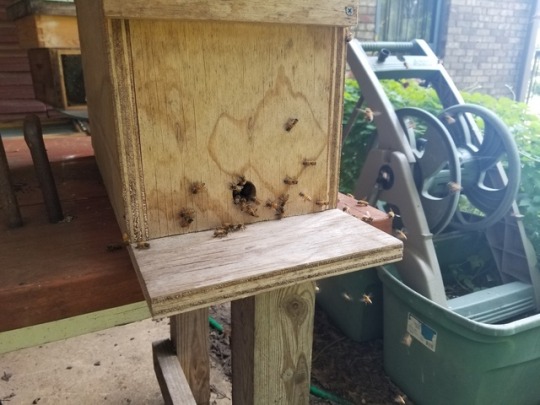
Apparently a good few bees didn't get the memo. I hope they find their way to their new home across the yard...
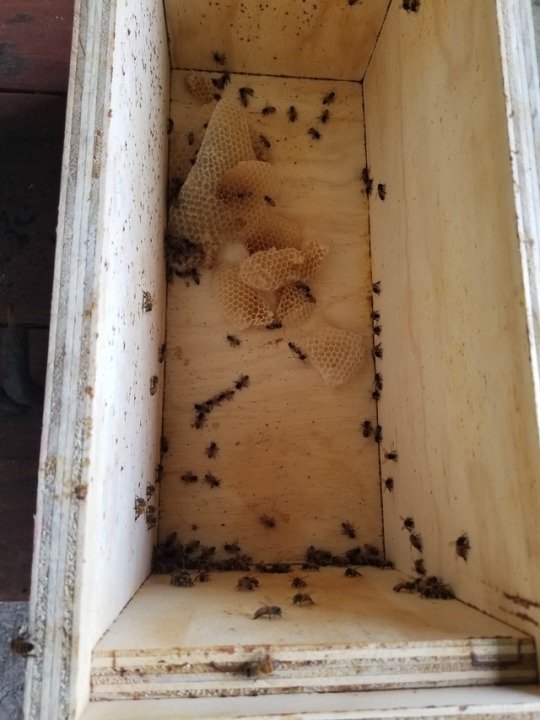
#Bees#Beekeeper#Beekeeping#Fox#Talks#Honeybee#Honeybees#Honeycomb#Honey#Bee#Hive#Hives#Easter Hiveland#Easter Hive#Easter#Swarm
20 notes
·
View notes
Text
My fashion statements enter four catagories.
Captain James Hook.
Cottagecore lesbian.
A fae queen.
Marry Poppins.
Bonus: Still enjoying how the hunters from my hiveland practically dress even if other orphaners hated it because I like being warm and having respect for myself.
3 notes
·
View notes